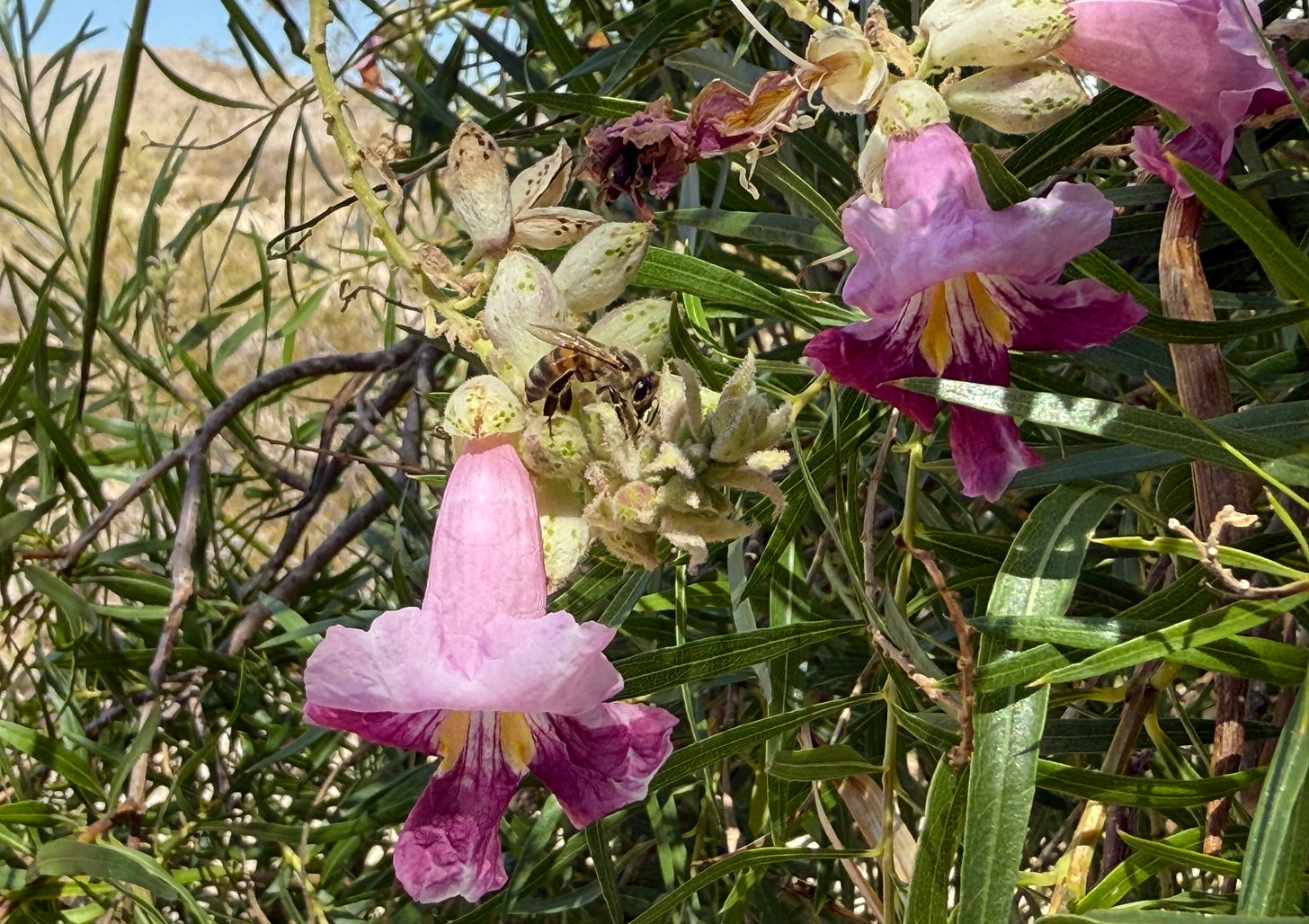
If you’ve spent any time near water sources in the desert this summer, you may have noticed the air humming a little louder than usual. That buzz you hear? It’s not just desert stillness playing tricks on your ears—it’s the sound of summer bees.
From the blooming smoke trees to the vault toilets at the Hidden Valley trailhead and Jumbo Rocks Campground, bees are everywhere right now. While they might seem like unwelcome guests during your hike or picnic, these winged wonders are part of a complex, ancient desert story.
Poet W. B. Yeats once dreamed of a “bee-loud glade,” conjuring up a peaceful Irish garden filled with their hum. In the Mojave, that glade might just be a kiddie pool or a sweat-soaked T-shirt. Not quite as poetic—but just as alive with activity.
Why so many bees now? As temperatures climb and desert moisture disappears, honeybees of all stripes come out in force looking for water. They’ll sip from your sweat or spilled soda—and from their favorite makeshift oases: puddles of water left by maintenance staff who clean vault toilets in the park. Honeybees sometimes overwhelm places where people gather in the park, leading to closures of the Lost Horse trail or the Keys View overlook.
This seasonal surge can seem overwhelming—especially to those with allergies or an aversion to insects—but it’s also a sign of life in one of the harsher environments in North America.
Even though they are super-useful as pollinators, honeybees are not native to North America. European settlers introduced them in the 1600s to pollinate crops. Today, agriculture depends on these little immigrants, and they help produce billions of dollars in food annually.
Meet the Locals
Despite the parched climate, the Mojave Desert is one of the richest bee habitats in the nation. According to a recent scientific study led by entomologist Dr. Michael C. Orr, Joshua Tree National Park hosts astonishing bee diversity—possibly up to 600 species. All of these bees are exquisitely adapted to dry climates.
Why are bees so bountiful? Our native bees are very specialized. Many of these bees pollinate just one family of flowers and ignore the rest. And though the flowers they pollinate only bloom for a short time, just as one group of flowers fades, another group comes into bloom—and each new bloom sequence supports a different set of bees.
Some species can delay emerging for years, waiting until the right plants bloom after a rare rain. Diadasia bees, for example, use pollen from only a few kinds of cactus, sunflower, and aster flowers.
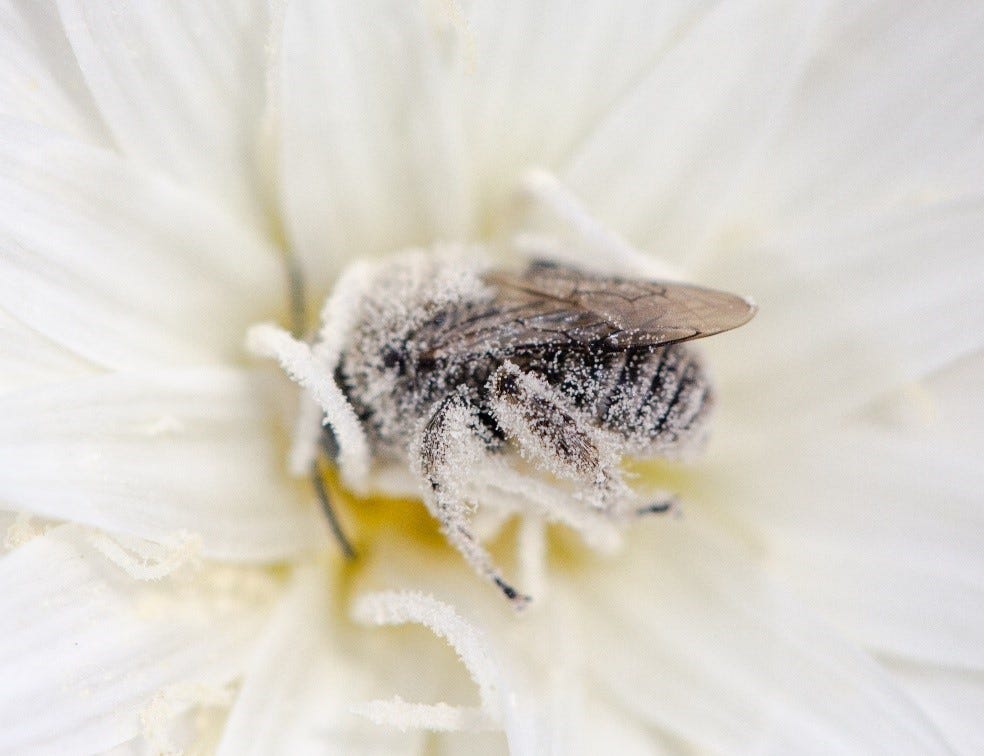
Unlike social honeybees, native bees are usually solitary. Many dig individual nests in the ground, where they wait out the seasons and where females lay their eggs.
Carpenter bees—gorgeous blue-black insects that dart and dive as they fly—chew holes in wood to build their nests. Females collect pollen and nectar and make a dough called “bee bread.” They lay one egg at the end of the hole, seal it with bee bread, and lay a half dozen more eggs, shutting them into cells, one behind the other. When the larvae hatch, they feed on the bee bread as they develop.
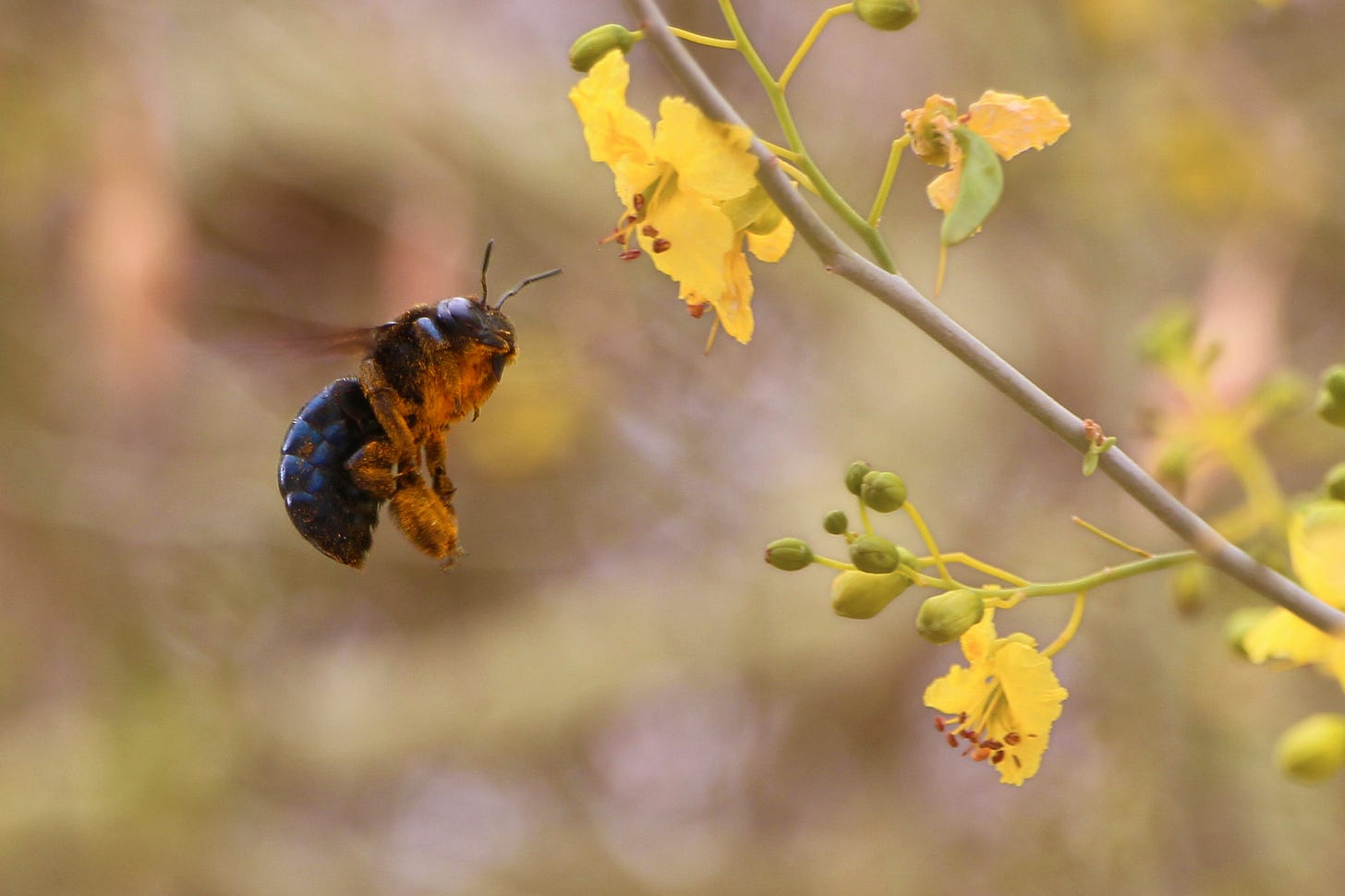
Bee-ing a Bee
I went looking for native bees, but it’s been a brutal year for wildflowers and probably for the native bees too. While we wait for the monsoon to roll in and summer flowers to bloom, I took a close look at our local European honeybees collecting pollen from a desert willow.
They were, as you’d expect, very busy, and it was hard to take a photo. In fact, it was almost easier to snap a hummingbird!
When you look at a desert willow flower, you can see lines running from its pink petals into the cup where pollen is produced. Bees see in ultraviolet, which is the color just beyond the violet at the rainbow’s end and a color few humans can see—although many animals can. In An Immense World, science writer Ed Yong says, “Ultraviolet vision is so ubiquitous that much of nature must look different to most other animals.” Flowers have evolved vivid UV patches the signal the presence of pollen.
Bees follow the lines into the flower and pick up pollen all over their fuzzy bodies, collecting it especially on their thighs—and there is nothing like the golden thighs of a honeybee! I watched the bees closely, moving slowly—bees process movement much faster than we do and so I probably looked like a big, dim blob as I tried to take pictures of bees being bees. (I will refrain from making a pun about to bee or not to bee. You’ve suffered enough.)
Most of the honeybees who live around here are not very reactive and really don’t want to sting you. European honeybees that have bred with bees from Africa are more aggressive, and these killer bees have been slowly spreading across the southern United States. They’re rare and not naturally hunting you, but they will sting to protect their hives.
Bees may be bothersome at times, but they’re also brilliant. They’ve evolved complex systems of navigation, plant preferences, nesting behaviors, and survival strategies in our dry desert paradise.
Meanwhile, we’ll wait for the monsoon and the appearance of summer flowers like fetid chinchweed and the native bees that pollinate it. After all, bees are the invisible web holding much of the desert’s floral tapestry together. Their work goes unnoticed most of the year—but in summer, they remind us that this land is alive, alert, and full of motion.
Leave your thoughts in the comments below. Please note that we do not allow anonymous comments. Please be sure your first and last name is on your profile prior to commenting. Anonymous comments will be deleted.
Feel free to share this article!
Are you subscribed?
Help us reach our 2025 goal of $10,000 in subscriptions! Upgrade to a paid subscription for just $5 per month or $50 per year.




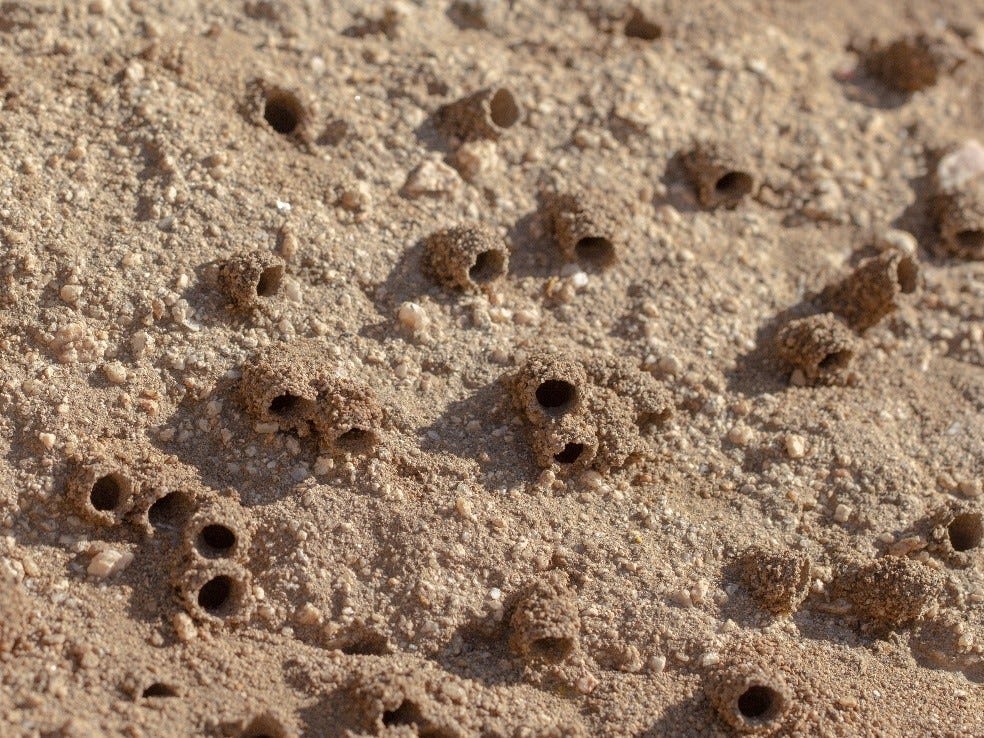
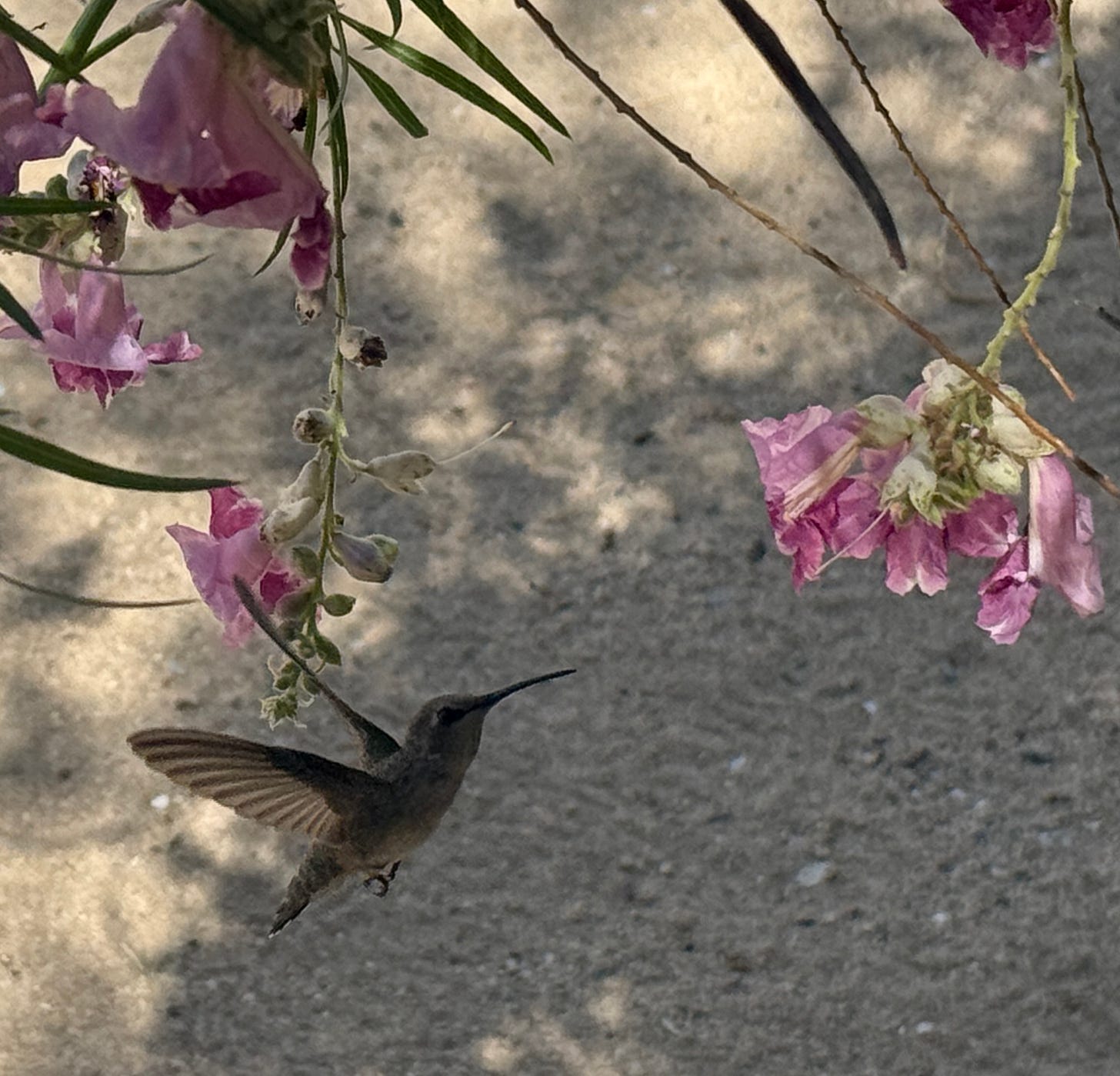

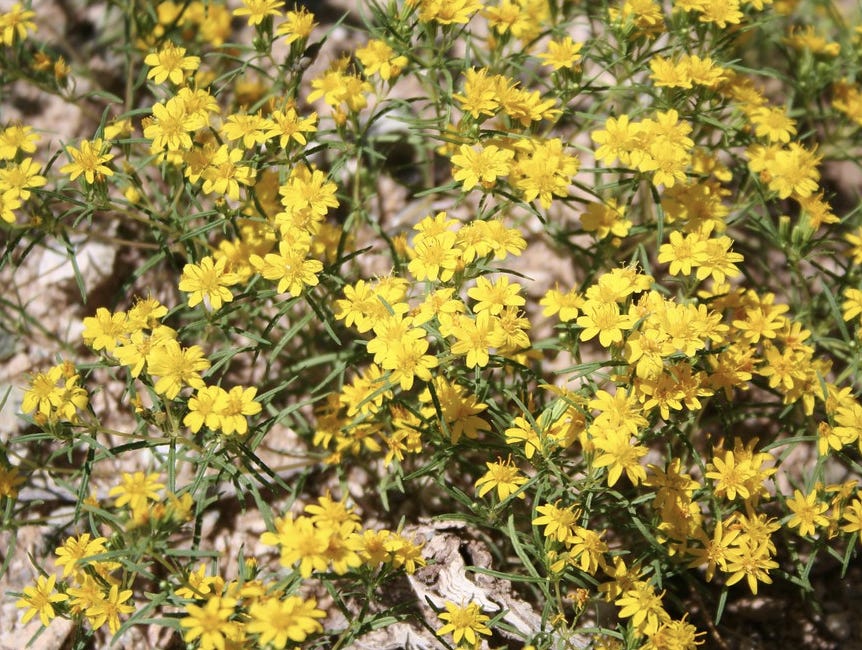
I LOVE Wildlife Wednesdays!!! More please!!!
I'd kept bees for a couple of decades out here in Desert Heights, near the Marine base. 2011 and 2012 were the only years with enough rain to allow me to harvest and bottle any honey.
The change in property owners from the Depression era World War Two set out here has also had an impact. The old property owners knew to water a few trees or plants. The short term rental owners don't seem to be oriented the same.
I stopped keeping honeybees after 20 something years when I considered the impact on native insects and those that feed on them, bats for example.
Roger